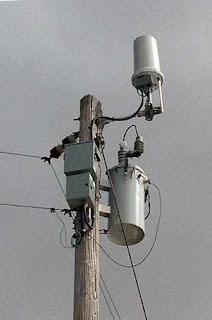Distributed Antenna Systems (DAS) are often used to provide cellular coverage in confined spaces.
Distributed Antenna Systems (DAS) are often used to provide cellular coverage in confined spaces. A DAS consists of an antenna array with multiple inputs and outputs, mounted on posts that are normally located on the ceiling or walls. The antenna array is connected via fiber media to a remote headend location where the signals can be processed and then distributed throughout the venue using existing cabling infrastructure.
Distributed Antenna Systems (DAS) are often used to provide cellular coverage in confined spaces such as arenas and stadiums, hotels, restaurants/retail establishments, hospitals, convention centers, college campuses, and other locations where macrocellular base stations cannot be easily installed or would not provide adequate coverage due to obstructions from buildings or other structures (such as trees).
This network of spatially separated antenna nodes is connected to a common source via a transport medium that provides wireless service within a geographic area or structure. DAS antenna elevations are generally at or below the clutter level, and node installations are compact.
A DAS antenna system consists of antennas with high gain and low beamwidth that are deployed in a dense grid.
A DAS antenna system consists of antennas with high gain and low beamwidth that are deployed in a dense grid. Antennas must be close together to provide good coverage, so the more antennas there are, the better. Additionally, when an antenna has a very wide beamwidth it can create interference problems by “spilling” into other channels or nearby frequencies. Therefore, having many small antennas helps mitigate this problem while also providing coverage over as large of an area as possible.
Because each DAS cell is generally smaller than one kilometer in diameter and only covers part of an area (for example, only around a single office building), it can cause dropped calls for anyone outside of its immediate radius—a limitation often called “soft handoff” because smartphones have no way of knowing whether they should be using 1xRTT or EV-DO signals when moving between cells within different radio sites throughout the city.
The antennas are also known as remote radio heads.
The antennas are also known as remote radio heads. They are also referred to as base station radios, remotes, RRHs, RRUs, and transceivers.
DAS antennas can be connected to the central unit over cables using a coaxial or fiber-optic cable.
DAS antennas can be connected to the central unit over cables using a coaxial or fiber-optic cable. Connections can be made with either of these two types of cables, or both. In addition, in some cases, a wireless connection may be used instead of one or both types of connectors.
DAS is used for both small indoor areas, such as commercial buildings or offices, and large outdoor areas such as big stadiums or city centers.
DAS is used for both small indoor areas, such as a commercial buildings or offices, and large outdoor areas such as big stadiums or city centers. It provides cellular coverage in confined spaces where traditional cell towers do not work well. The technology can be installed on walls, ceilings, and floors inside buildings to increase cell reception and make it accessible throughout the entire structure. DAS also enables multiple carriers to share a single antenna system by using different carriers' equipment within the same device.
Cellular operators have the option to directly connect their base stations to the central unit.
Cellular operators have the option to directly connect their base stations to the central unit. This can be done by using directional antennas or by using a coaxial cable. These antennas are also used for other devices such as mobile phones, tablets, and laptops.
The central unit is an important element of a distributed antenna system because it provides coverage to many users at once. The central unit receives signals from all connected base stations and broadcasts them through the network of cables throughout the building so that everyone gets service at once. This can be advantageous when there are multiple users in one area; however, it’s not as helpful in situations where each person is experiencing different issues (for example, one user wants faster data speeds while the other requires more coverage).
Furthermore, this type of system uses more energy because each time you send data over these cables instead of airwaves like traditional cellular towers do it introduces unnecessary steps into your transmission process which ultimately becomes costly for businesses operating DAS systems on large scales like airports or stadiums where thousands of people might want service access simultaneously




